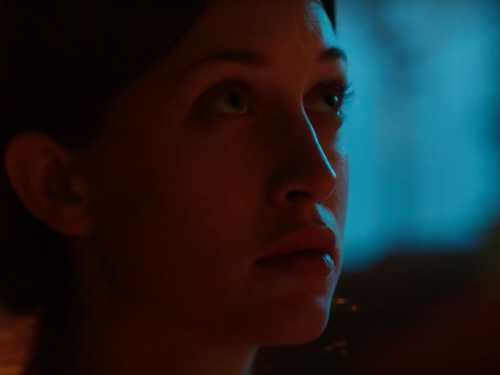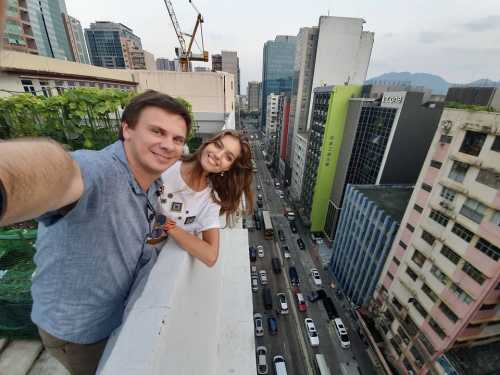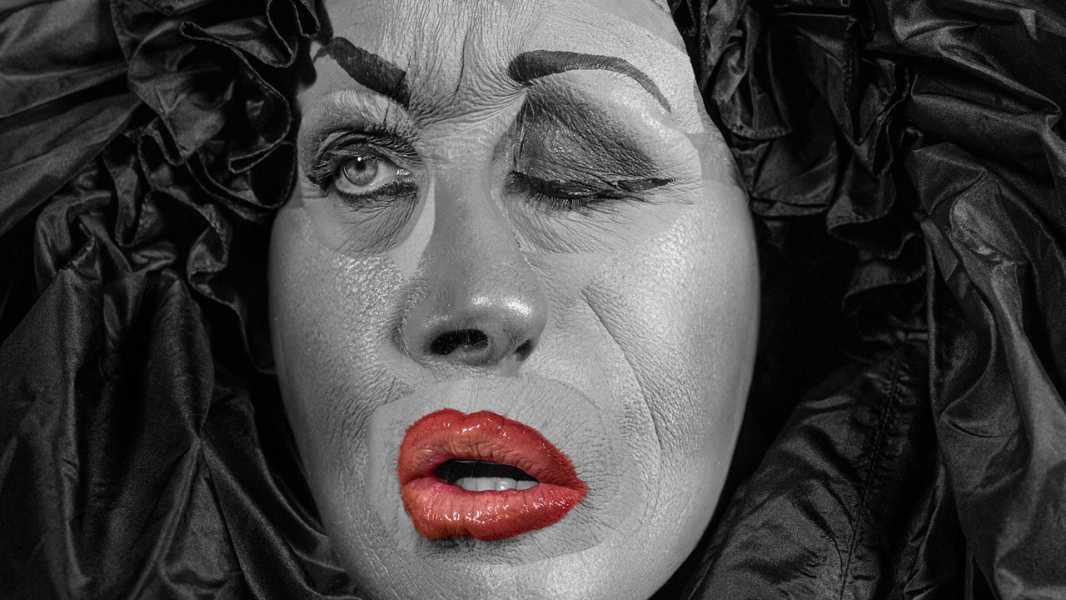
Save this storySave this storySave this storySave this story
Cindy Sherman, the grande dame of the Pictures Generation, has a new show up at Hauser & Wirth’s recently opened space in SoHo—a collection of wacky, digitally collaged character studies, which continue her multipronged expedition into the outer realms of persona building, artifice, and the fun-house world of media images. The gallery bills it as a neighborhood homecoming of sorts, describing in a press release how Sherman mounted the New York début of her epochal series “Untitled Film Stills” in SoHo, at the nonprofit gallery Artists Space, some forty-odd years ago. The pedant in me is compelled to note that Artists Space was in Tribeca at the time of the 1978 exhibition, having moved from Wooster Street down to Hudson Street the year before, but I grant that it was within spitting distance of SoHo if you were a very good spitter.
Regardless, just as both of those neighborhoods have come a long way from their incarnations as magnets for rowdy bohemians, Sherman, who just celebrated her seventieth birthday, is far removed from her days as an upstart artist crafting pastiches of imperilled ingénues in noirish faux films. In some ways, the new show is about the inexorable pull of time, the lamentable fact of aging. The characters in it—which, of course, are all Sherman in disguise—are women in their senescence, a state Sherman exaggerates to cartoonish effect, using pancaked makeup and Cubistic digital-collage techniques that can make the faces of her imaginary subjects puffy, pinched, and simply strange. In one particularly on-the-nose work, Sherman has blacked up her nostrils and painted her eyes so that she resembles a cross between a weeping Tammy Faye Bakker and a grimacing skull.

“Untitled #629,” 2010/2023.
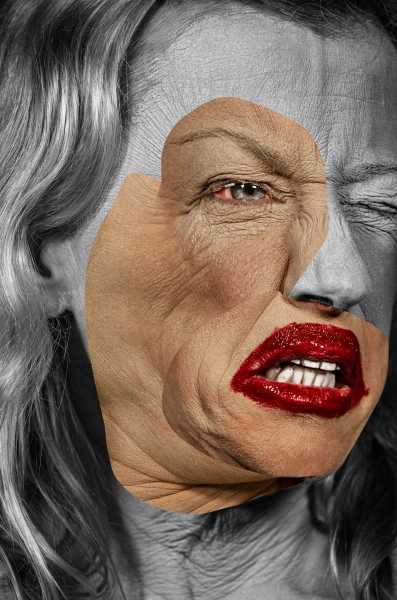
“Untitled #632,” 2010/2023.
This kind of heavy digital intervention is a first for Sherman in a gallery context, but for years she has maintained what amounts to a digital sketchbook on her Instagram account, where, to some four hundred thousand followers, she shares pictures of her face that have been mangled and distorted with various filters and A.I. algorithms. For the works at Hauser & Wirth, she’s traded the stock programs for manipulations of her own devising, using physical and digital collaging of her features—an eye here, an ear there—to make mishmashes that seem to take their cues equally from Pablo Picasso, commedia dell’arte, and Mr. Potato Head. Both on Instagram and in these new images, she cannily uses computerized effects against the grain. Rather than trying to operate by sleight of hand, like a retoucher tasked with zhuzhing up our bland analogue reality, Sherman lets the seams of her interventions show, creating a kind of cybernated burlesque.
These new pictures have an autobiographical resonance that Sherman’s previous projects generally lacked, despite the fact that she has spent her whole career photographing herself. For the most part, her relationship with her own image has been one of convenience. Sherman works alone, in a Tribeca studio or in a converted barn on her property in East Hampton, which are now chockablock with wigs, costumes, props, and prostheses, accreted over years of rummaging. For almost five decades, she has been her own willing subject, but she has long emphasized in interviews that the process of becoming her characters is only successful when they are sufficiently disentangled from herself. More recently, she has been loosening the divide. She told the Guardian in 2016, “I am not trying to obliterate myself and completely hide within the images like I used to. I am a little more comfortable now in letting parts of myself show through.” Unlike the prim, icy ladies-who-lunch of her “Society Portraits”—who, it was surmised when they were first shown, look out from across the yawning cultural divide that separates the artist and her patrons—the women in the new series could be almost anyone. They wrestle with their decline vainly, comically: a woman swaddled in a leopard-print shawl looks wistfully into the middle distance, her teeth splotched with lipstick; a faded beauty with lips pumped up like an inner tube winces slightly, her eyes ringed with dark circles and her painted-on eyebrows askew. Of course, Sherman is not these women—out of costume she is stylish, easily youthful, far from grotesque—but one senses that, if she doesn’t yet identify with their plight, she perhaps fears a time when she will.
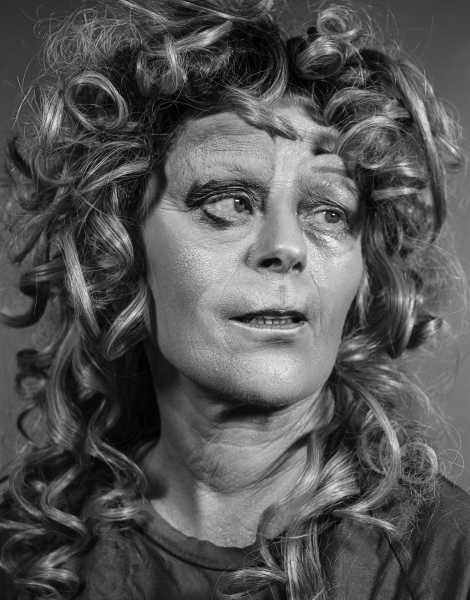
“Untitled #650,” 2023.
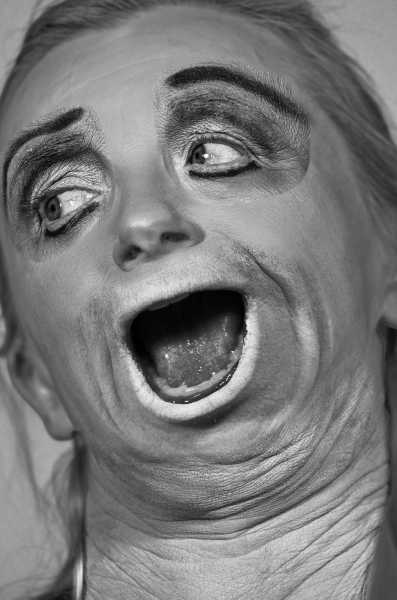
“Untitled #642,” 2010/2023.
From early on, a crew of theorists, Craig Owens, Douglas Crimp, and Laura Mulvey among them, canonized Sherman as a brow-furrowing, super-serious artist, making work about weighty postmodern concerns. But it is equally true that Sherman is an artist who loves to goof around. Just look at a work of her mugging meanly for the camera in the spirit of a silent-movie villainess, her face bobbing on an ocean of fur, or at a piece in which her distorted faces resemble an anthropomorphized turtle in a wig, poking its head out of a satin shell. To my mind, a critical shibboleth that has hobbled interpretations of Sherman’s work is the notion that it is concerned with the endless mutability of the self, and reflects the purported truth that our identities are little more than a cloud of floating signifiers and refractions of media images. How tiresomely PoMo. This show drives home what Sherman has always been getting after: the tumultuous relationship between the persona and the person, between our masks and what they conceal. These characters, with their freaky, roiled features, seem to teeter on the edge of a breakdown, as if, after all the years of posturing and posing, the façade is finally about to give way.
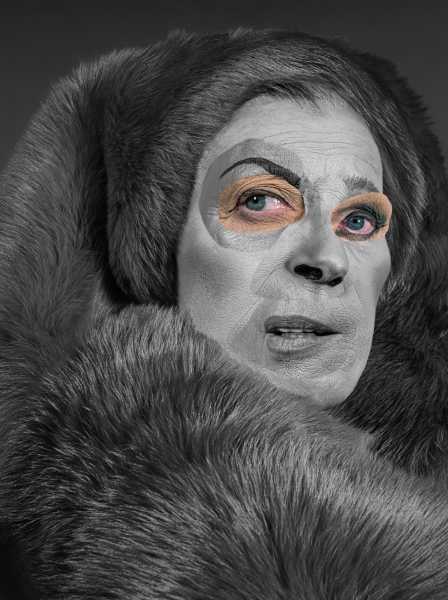
“Untitled #646,” 2023.

“Untitled #659,” 2023.
Sourse: newyorker.com
